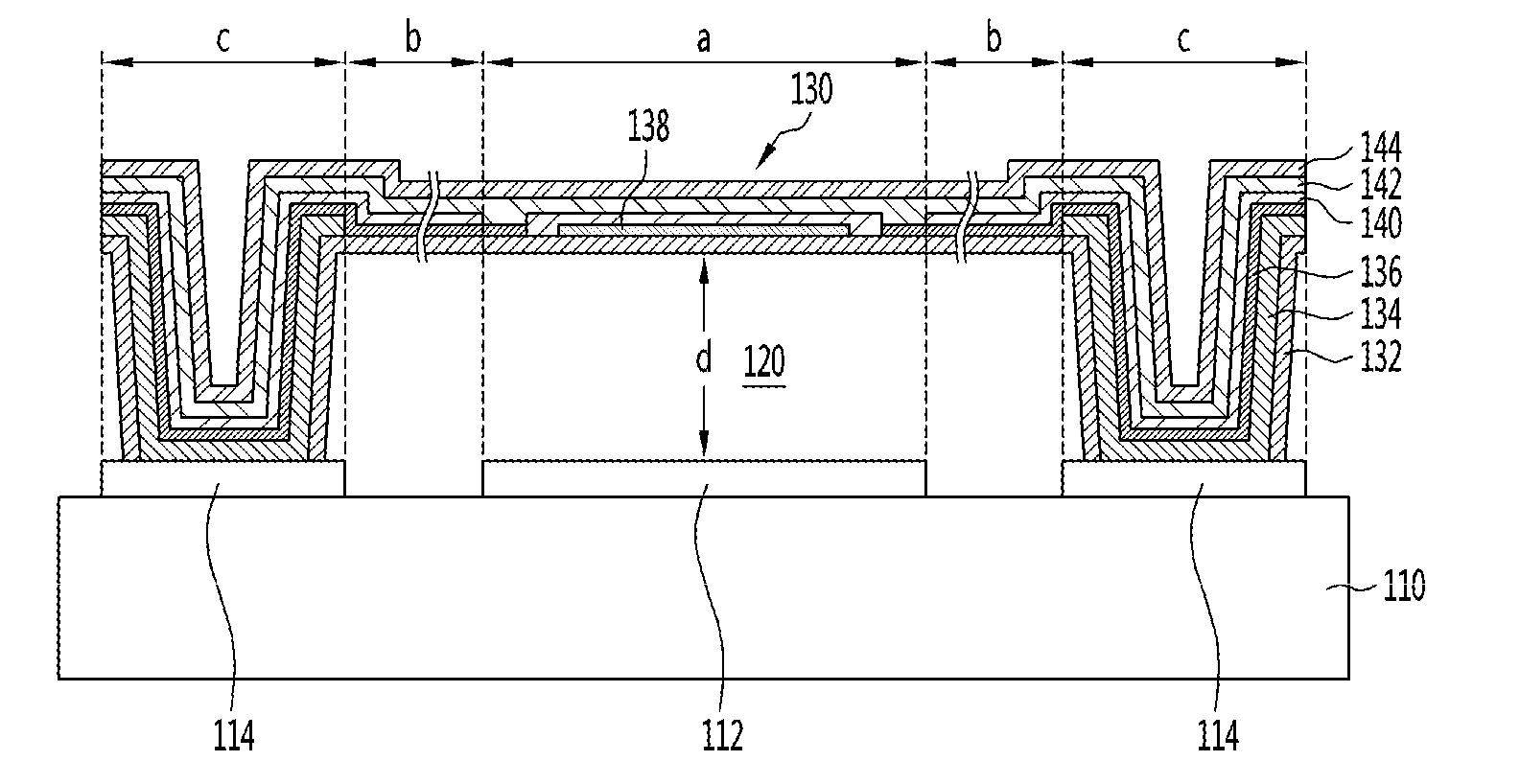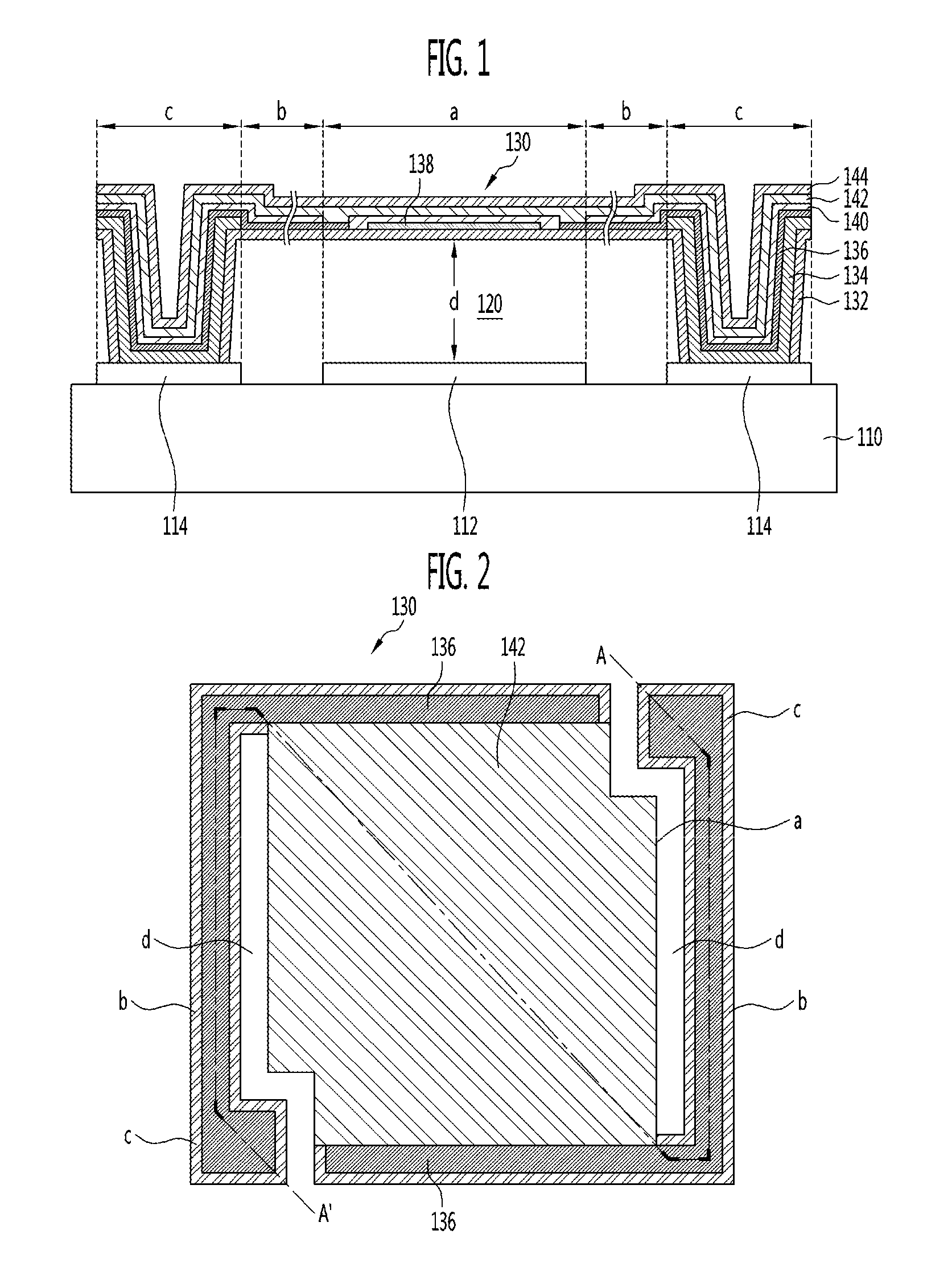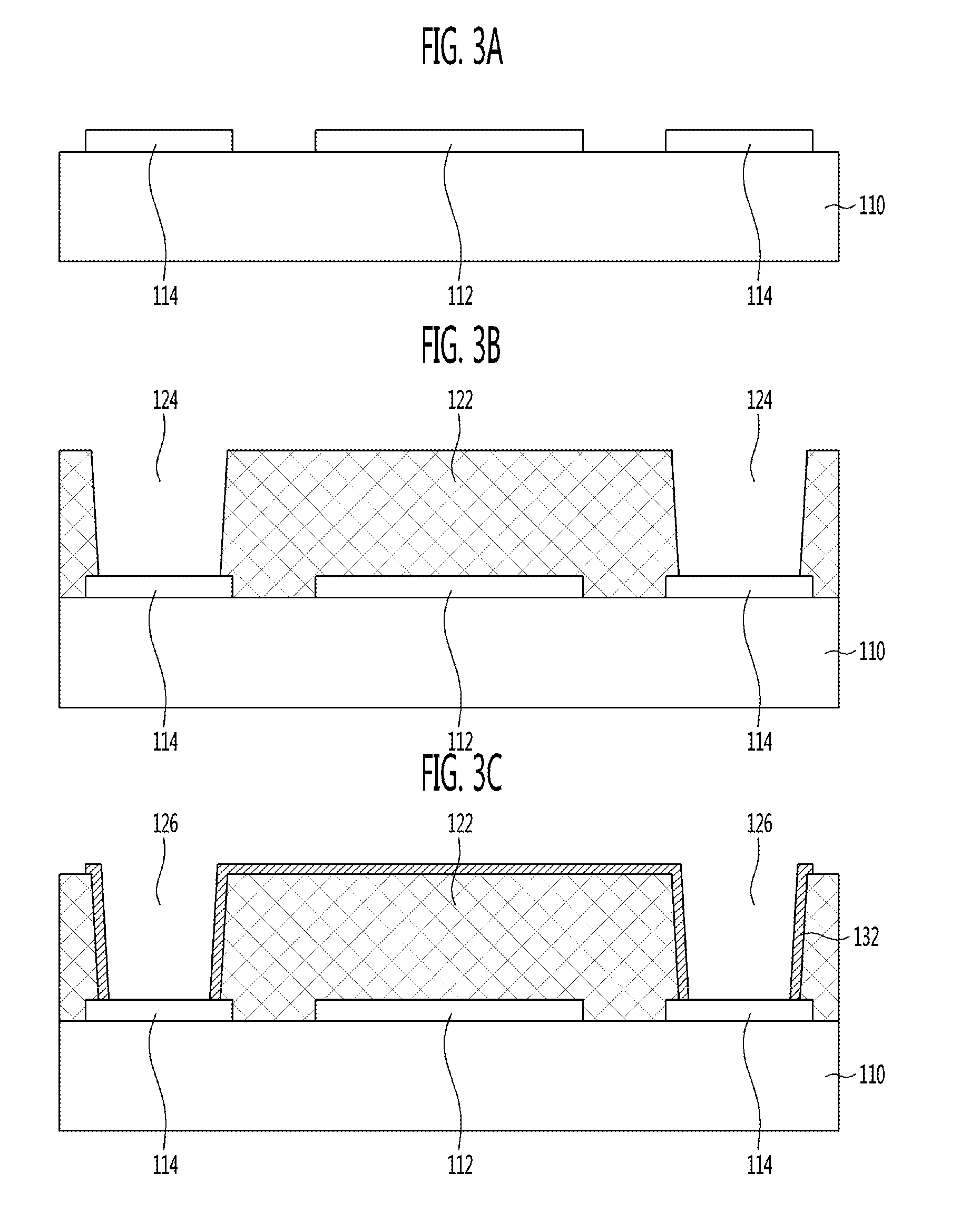Resistive material for bolometer, bolometer for infrared detector using the material, and method of manufacturing the bolometer
a technology of resistive materials and bolometers, which is applied in the direction of optical radiation measurement, other chemical processes, instruments, etc., can solve the problems of disadvantages of previous resistive materials for bolometers, small size, and low price, and achieve superior properties
- Summary
- Abstract
- Description
- Claims
- Application Information
AI Technical Summary
Benefits of technology
Problems solved by technology
Method used
Image
Examples
embodiments 1 through 10
[0080]Sb thin films to which N and / or O was added were each deposited to a thickness of 80 to 120 nm on a silicon single crystal substrate, on which a silicon nitride (Si3N4) layer was formed to a thickness of 100 nm, and then resistivity and TCR properties were measured. The Sb thin films were deposited by reactive sputtering injecting Ar gas with which nitrogen (N2) gas and / or oxygen (O2) gas was mixed into a chamber, and applying DC power to an Sb target. The properties of the thin films were examined according to sputtering conditions, and are arranged in Table 1 below
TABLE 1Sputtering ConditionsThin Film PropertiesSampleGas flowPressureTemperature ofDC PowerComposition*ResistivityTCRNo.(sccm)(mTorr)Substrate (° C.)(W)(at %)(Ω· cm)(% / K)1O2 / Ar = 5 / 252.9150Sb = 100—1.282.832O2 / Ar = 8 / 253.1150Sb = 100—9.663.193O2 / Ar = 8 / 253.125Sb = 100—6.753.154N2 / Ar = 20 / 203.4300Sb = 100Sb:N = 95:57.812.915N2 / Ar = 10 / 253.3150Sb = 100—1.983.216N2 / Ar = 15 / 253.6150Sb = 100Sb:N = 91:99.393.387N2 / Ar = ...
embodiments 11 through 17
[0081]Sb-based thin films in which Ge or Ti was added to Sb thin films to which N and / or O was added were each deposited to a thickness of 110 to 150 nm on a silicon single crystal substrate, on which a silicon nitride (Si3N4) layer was formed to a thickness of 100 nm, and then resistivity and TCR properties were measured. The Sb-based thin films were deposited by reactive co-sputtering injecting Ar gas with which nitrogen (N2) gas and / or oxygen (O2) gas was mixed into a chamber, and independently applying DC power to an Sb target and a Ge or Ti target. The properties of the thin films were examined according to co-sputtering conditions, and are arranged in Table 2 below
TABLE 2Sputtering ConditionsThin Film PropertiesSampleGas flowPressureTemperature ofDC PowerComposition*ResistivityTCRNo.(sccm)(mTorr)Substrate (° C.)(W)(at %)(Ω· cm)(% / K)11N2 / Ar = 10 / 253.4300Sb / Ge = 100 / 25Sb:Ge:N = 82:11:77.462.4812O2 / N2 / Ar = 2 / 4 / 253.125Sb / Ge = 100 / 25(Sb + O):Ge:N = 80:15:510.73.1613O2 / N2 / Ar = 6 / 12 / ...
embodiments 18 through 23
[0082]Sb-based thin films to which Ge was added were each deposited to a thickness of 80 to 150 nm on a silicon single crystal substrate, on which a silicon nitride (Si3N4) layer was formed to a thickness of 100 nm, and then resistivity and TCR properties were measured. The Sb-based thin films were deposited by co-sputtering injecting Ar gas into a chamber, and independently applying DC power to an Sb target and a Ge target. The properties of the thin films were examined according to co-sputtering conditions, and are arranged in Table 3 below
TABLE 3Sputtering ConditionsThin Film PropertiesSampleGas flowPressureTemperature ofDC PowerCompositionResistivityTCRNo.(sccm)(mTorr)Substrate (° C.)(W)(at %)(Ω· cm)(% / K)18Ar = 303.4150Sb / Ge = 25 / 100Sb:Ge = 38:626.382.5019Ar = 303.4150Sb / Ge = 75 / 100Sb:Ge = 88:121.352.4120Ar = 303.4200Sb / Ge = 25 / 100Sb:Ge = 26:747.462.6021Ar = 303.4300Sb / Ge = 50 / 100Sb:Ge = 64:3616.93.0522Ar = 303.4300Sb / Ge = 90 / 100Sb:Ge = 71:2917.72.9923Ar = 303.4300Sb / Ge = 100 / 75...
PUM
| Property | Measurement | Unit |
|---|---|---|
| resistance | aaaaa | aaaaa |
| thickness | aaaaa | aaaaa |
| resistivity | aaaaa | aaaaa |
Abstract
Description
Claims
Application Information
 Login to View More
Login to View More - R&D
- Intellectual Property
- Life Sciences
- Materials
- Tech Scout
- Unparalleled Data Quality
- Higher Quality Content
- 60% Fewer Hallucinations
Browse by: Latest US Patents, China's latest patents, Technical Efficacy Thesaurus, Application Domain, Technology Topic, Popular Technical Reports.
© 2025 PatSnap. All rights reserved.Legal|Privacy policy|Modern Slavery Act Transparency Statement|Sitemap|About US| Contact US: help@patsnap.com



